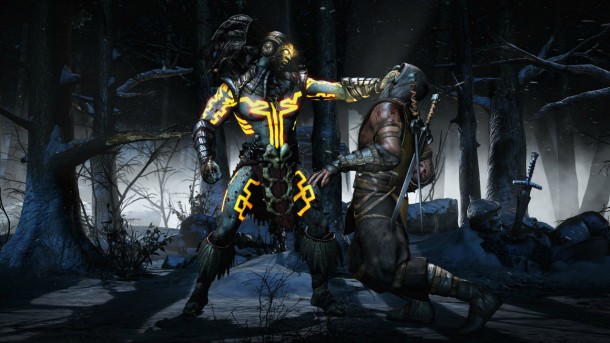Please support Game Informer. Print magazine subscriptions are less than $2 per issue
More Than 200 Psychology Scholars Speak Out Against APA Video Game Aggression Task Force

Yesterday, we reported on a new American Psychological Association (APA) task force report that affirms a link between video games and aggression. Today, we were contacted by one of over 200 academics who issued a statement in 2013 regarding the APA task force and its methodology.
Stetson University psychology professor Chris Ferguson, one of the approximately 230 academics who signed the open letter to the APA reached out to us to share his concerns over the task force report. He identifies issues with the group conducting the research audit and its findings.
“As a researcher in this field, I thought you might be curious to know that there are actually a lot of problems with this report, how the task force was comprised, and the basis for its conclusions on research,” Ferguson told me. “Indeed, the evidence linking violent games to aggression is honestly a lot less clear than the APA report would have one believe. There are an increasing number of studies coming out now that suggest there is no link whatsoever. Further, the task force appeared to have been selected from among scholars with clear anti-media views (two had previously signed an amicus brief supporting attempts to regulate violent video games in the Brown v EMA 2011 Supreme Court case for instance).” That landmark case struck down California’s law prohibiting sales of certain games to minors. Games were deemed protected under the first and fourteenth amendments.
Ferguson tells me that of the seven task force members, four had at anti-media leanings, with another that uses aggression measures that have been called into question by some factions of the psychology community. "To some degree, they're really commenting on their own product," he says. "I think people interpret these things as neutral. You have to remember that they are commenting on their own product. These are people looking at their own research and declaring it beyond further debate. All of us would love to do that, but we don't really get that chance, nor should we."
He also notes that all seven members of the task force were over the age of 50, citing a correlation between views on media and age. "I point that out because there is solid evidence that age is a correlate for attitudes about video games, even amongst scholars," Ferguson explains. "Age and negative attitudes toward youth predict anti-game attitudes."
The open letter to the APA cites confirmation and publication bias that could result from the organization’s 2005 policy statement that offered strong conclusions based on allegedly weak evidence. The group of 230 identifies subsequent research that contradicts the APA’s policy, which calls for a “reduction of all violence in videogames and interactive media marketed to children and youth.”
Further, the APA policy statement indicates that the group would work with video game developers and publishers to address connections between consumption of video game violence and aggression and violence (stating that interactive media have a more profound impact than non-interactive forms). The document puts a fine point on this matter. “Be it further resolved that APA recommend to the entertainment industry that the depiction of the consequences of violent behavior be associated with negative social consequences,” the document reads.
The academics that signed the open letter raised concerns about the definitive nature of the policy. They suggest that the strong language presents bias that might dissuade or devalue the presentation of scientifically sound contradictory research.
We express the concern that the APA’s previous (2005) policy statement delineated several strong conclusions on the basis of inconsistent or weak evidence. Research subsequent to that 2005 statement has provided even stronger evidence that some of the assertions in it cannot be supported. As an important scientific discipline that helps shape the public discourse on issues of behavior, policy statements that are rigid or ideological can serve to stifle scientific innovation and new theories and may inadvertently serve to increase publication bias, particularly given concerns about both disregard for null findings and researcher degrees of freedom (Simmons et al., 2011).
Against this background we further express the belief that it is possible for responsible scholars to make good faith arguments both that media violence may have some influence on aggression or other outcomes, or that media violence may not have such effects. Similarly, we believe that pressure to produce “positive” findings is present throughout the review and publication process as well as in grant-seeking. Obviously, positive findings should certainly be welcomed, but so should “negative” findings or failed replications. Without care taken to encourage publication of non-replications, we will not have a full view of the data in this field.
The open letter goes on to raise concerns about the meta-analysis approach taken by the task force. “Unfortunately, it is our observation that, in communicating results to the general public, scholars and the APA’s previous policy statements have tended to focus on bivariate effect sizes, which may be more misleading than informative,” the report reads. “Similarly we are skeptical of a 'the average effect size wins' approach to meta-analysis, which could be used to smooth over inconsistencies and failed replications.”
Ferguson and his colleagues also point to data evidencing a decrease in youth violence, which contradicts assertions that media (video games and non-interactive forms) are a public health concern. Ferguson cites colleagues at Oxford, Villanova, Western Michigan University, and more that have presented recent findings in peer-reviewed journals. These studies indicate that there is no connection between violent video games and aggression. A study by Patrick Markey at Villanova indicates that "participants who were not angry tended to be relatively unaffected by exposure to violent video games."
A study conducted in 2012 by Whitney Gunter and Kevin Daly at Western Michigan University sampled 6,567 eighth grade students. "Results indicate a substantial decrease in the relationship between video games and these outcomes when a matched sample is used," the study finds. "This suggests that the strength of evidence supporting a relationship has likely been overestimated using other methodologies."
Ferguson tells me that the APA didn't assemble the task force or conduct its work in a transparent manner. "They stacked the committee with people who had taken pretty clear anti-game positions," he says. "The first thing they did was send out an email blast to scholars. Most of the people they sent the email to were anti-media. I happened to be the one skeptic. When I pointed out that they happened to not include a number of other scholars, the only thing they did different was start blind carbon copying the emails instead of open carbon copying them. They reduced their transparency."
He tells me that this action was one of the reasons the group of more than 200 wrote and signed the open letter. "The task force made zero effort to communicate or ask any of the 238 scholars," Ferguson says. "There was no effort by the APA to connect with the scholarly community, specifically the skeptical scholars."
We've reached out to the APA to inquire about the open letter and Ferguson's comments. We'll update should we receive a response.
Our Take
As new research emerges, we must be open to incorporating it into our outlook. The 2005 policy statement makes definitive statements that appear to be outdated, creating a conflict between authentic research findings and the APA's stated beliefs on a matter that is still under investigation. The APA statement presupposes conclusions that may not be accurate and, given that it's 10 years old, seems to be in need of revision, or at least revisitation.










